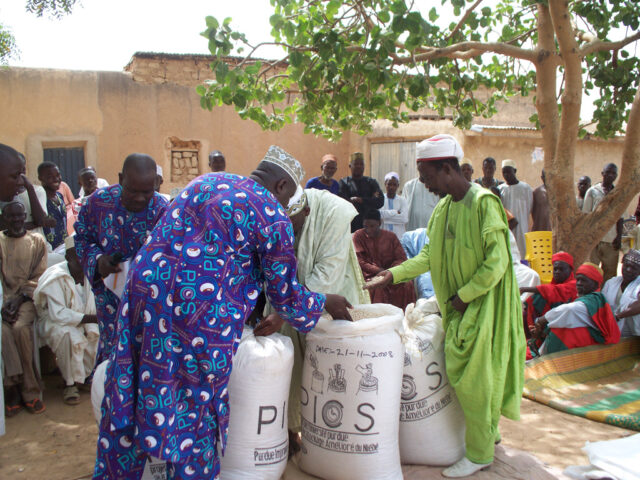
Food environments are rapidly changing in low- and middle-income countries posing complex challenges. Research on the food environment, the space between food production, storage, and transportation and consumption, is a relatively new area. There are numerous frameworks, typologies and metrics that make it hard to understand what the food environment is and why it matters for research, programs, and policies.
On March 13, 2024, around 40 nutrition staff from the National Institute of Nutrition (NIN) in Viet Nam attended a seminar to learn about food environment research and to discuss preliminary results from a study conducted by the CGIAR Research Initiative on Sustainable Healthy Diets through Food Systems Transformation (SHiFT) in Viet Nam. The study team included researchers from NIN, the International Food Policy Research Institute, Wageningen University and Research, the French National Research Institute for Sustainable Development, and the French Agricultural Research Centre for International Development.
The study was conducted from 2022-2023 in three districts – Dong Da, Dong Anh, and Moc Chau – representing a continuum of urban, peri-urban, and rural sites. Over 3,000 adolescents (12–18-year-olds) and more than 6,000 outlets that sell food or drinks were surveyed across all three sites.
Two important messages about food environment challenges for adolescents’ diets
To start, Inge Brouwer, Senior Research Fellow at IFPRI and SHiFT Lead, provided a short introduction about SHiFT and its goals. Then Jef Leroy, Senior Research Fellow at IFPRI and SHiFT Work Package 1 Lead, explained more about the food environment and the findings from the SHiFT survey in Viet Nam.
Results from the study suggest two things about adolescent diets and their food environment. One, diet quality is overall low. Adolescents do not consume enough healthy foods. On the positive side, adolescents have a relatively low consumption of unhealthy foods. Two, adolescents live in a food environment that makes it challenging to avoid unhealthy options. For instance, in urban areas, most adolescents live less than 50 meters – or a 30-second walk – from the nearest vendor selling sugary drinks and ultra-processed foods. Across all the study sites, unhealthy foods were more accessible than healthy foods, like fruits. Around half of all the adolescents surveyed had consumed food or drinks away from home in the 24 hours preceding the survey. The share was highest in the rural study site.
NIN staff discussed the results with the study team from IFPRI and WUR. There were several questions about methodology, specifically, the Global Diet Quality Score, and which type of foods fit into the ultra-processed food category. Several observations were made by NIN staff that the study team will incorporate as they refine the analysis.
Looking ahead
Two conclusions are emerging from the study results.
- Improving the diet quality of adolescents will require increasing their consumption of healthy foods and keeping their consumption of unhealthy foods low.
- The nature of the adolescent food environment with widespread availability of unhealthy foods suggests that keeping the consumption of these foods at their current low levels could be challenging.
As one of SHiFT’s Strategic Partners in Viet Nam, NIN will be working closely with SHiFT to continue discussions about the research results and to develop ideas for further research and interventions that align with Viet Nam’s goals for sustainable food systems transformation.
The International Food Policy Research Institute and the Alliance of Bioversity and CIAT lead SHiFT in close collaboration with Wageningen University and Research and with contributions from the International Potato Center. SHiFT combines high-quality nutritional and social science research capacity with development partnerships to generate innovative, robust solutions that contribute to healthier, more sustainable dietary choices and consumption of sustainable healthy diets. It builds on CGIAR’s unparalleled track record of agricultural research for development, including ten years of work on food systems and nutrition under the CGIAR Research Program on Agriculture for Nutrition and Health (A4NH).
The visit was by invitation of the NIN Board of Directors and hosted by Associate Professor Dr. Truong Tuyet Mai. A more detailed summary of the visit was featured on the NIN website.
Header image: Staff from NIN and members of SHiFT pose following the visit and seminar on food environment research at NIN’s offices on March 13, 2024, in Hanoi, Viet Nam. Photo by Bach Van Thang, National Institute of Nutrition.
This news item was written by Sydney Honeycutt, Communications Consultant.



